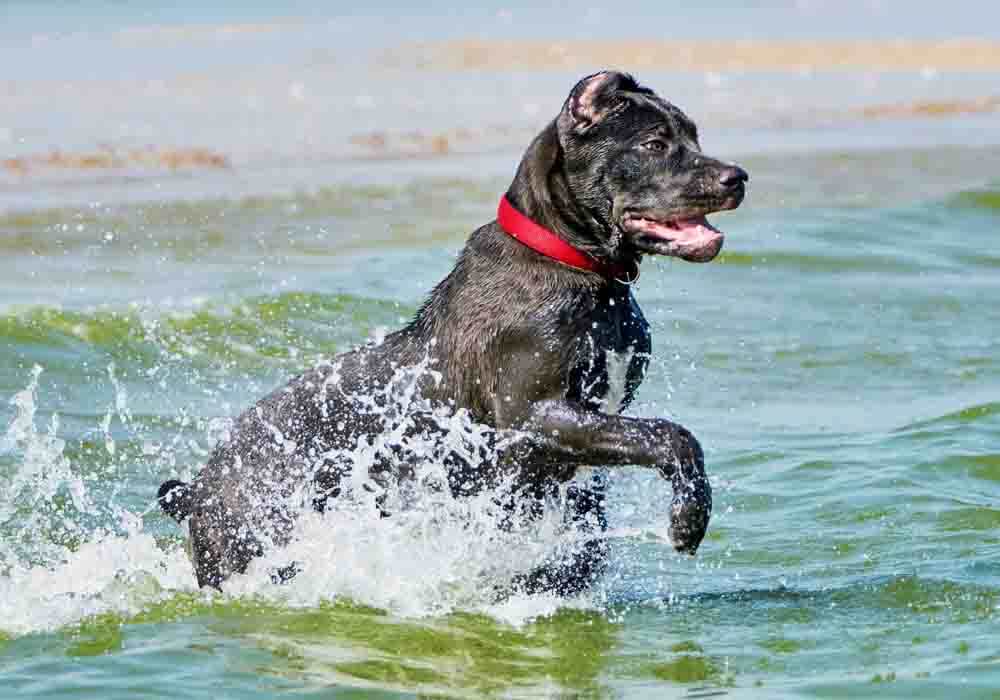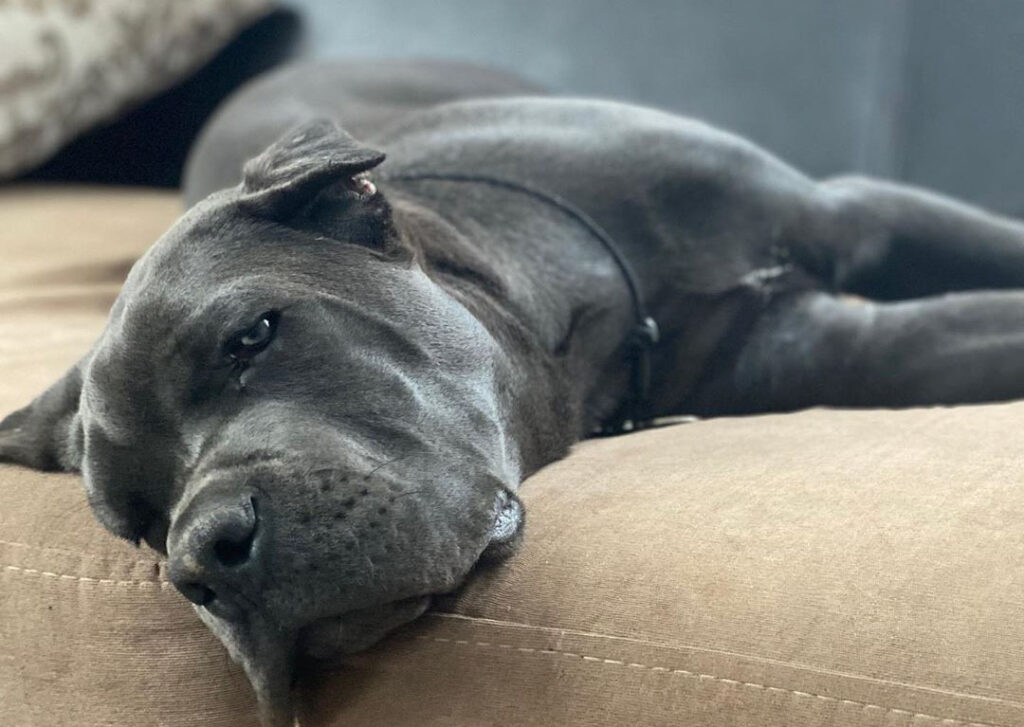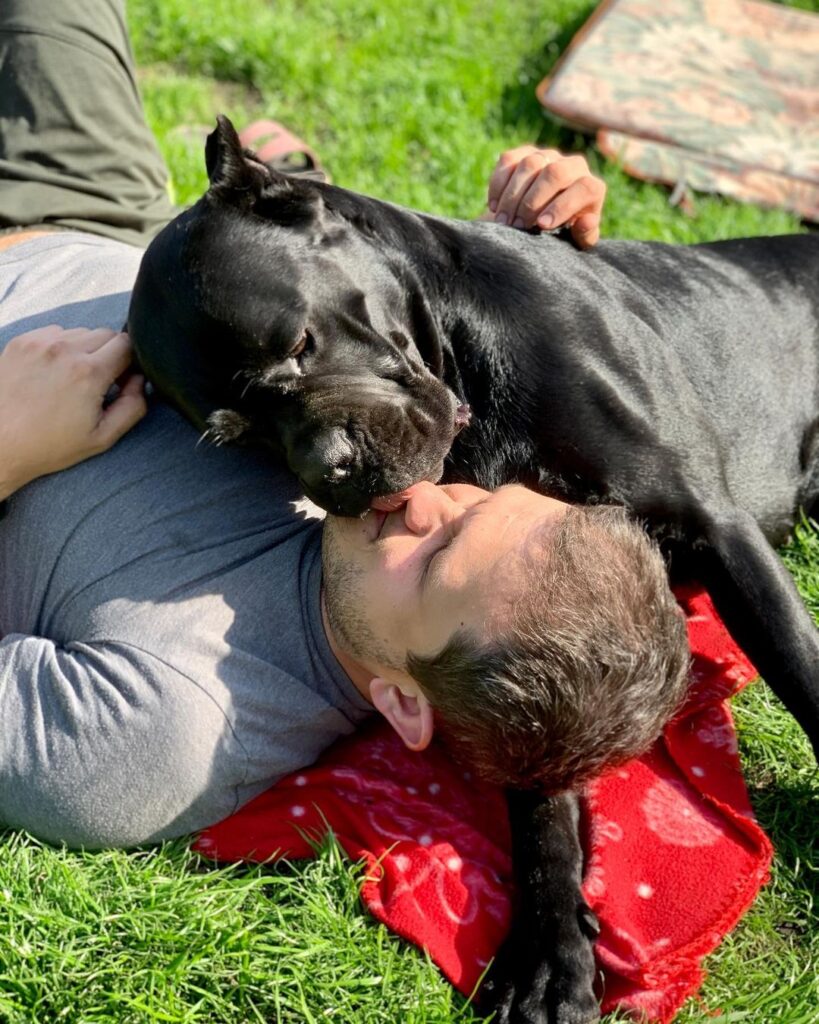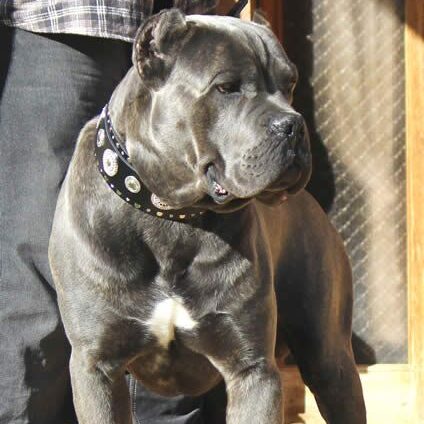
Cane Corso potty training can be a rewarding journey for both you and your furry companion. In this comprehensive guide, we’ll walk you through the essential steps and strategies to ensure a successful and stress-free potty training experience. Whether you’re starting with a playful puppy or an older dog, these techniques will help you establish a strong foundation for good behavior.
How to Potty Train Your Cane Corso
Potty training your Cane Corso starts with setting the right foundation. First, choose a suitable location for training, whether it’s indoors or outdoors. This designated area should be easily accessible, quiet, and safe. Equally important is selecting the proper training supplies, including puppy pads, cleaning solutions, and treats for positive reinforcement.
Setting the Foundation
Setting a solid foundation is crucial for effective potty training. Understand your Cane Corso’s signals by observing their behavior. Most dogs exhibit signs like sniffing, circling, or whining when they need to go. By recognizing these cues, you can proactively take them to the designated potty area, reducing accidents and reinforcing good habits.
Positive Reinforcement
Positive reinforcement is the key to success in Cane Corso potty training. When your dog successfully uses the designated potty area, offer praise and rewards immediately. Treats and enthusiastic words of encouragement create a positive association with the desired behavior. Consistency in praise helps your dog understand what you expect, making them more eager to please.
Crate Training
Crate training can be an invaluable tool in your potty training arsenal. Introduce your Cane Corso to the crate gradually, making it a comfortable and secure space. The crate can help you manage your dog’s environment, reducing the chances of accidents when you can’t supervise them closely. Remember, the crate should never be used as a form of punishment but rather as a safe haven for your furry friend.
At What Age Potty Training Should Be Started
Embarking on the journey of potty training your Cane Corso is an important step in their development, and timing is crucial. So, when should you start this essential training? Ideally, potty training should commence when your Cane Corso is around 8 weeks old, which is typically the age when puppies are ready to leave their mother and littermates. At this stage, they are more receptive to learning and adapting to new routines.
Early Start
Starting potty training early offers numerous advantages. The key benefit is that it helps prevent undesirable habits from forming. Young puppies have not yet developed strong preferences for eliminating indoors or outdoors, making them more adaptable to your desired potty location. Additionally, puppies have smaller bladders and need to relieve themselves more frequently, which makes it easier to establish a consistent routine.
Another crucial aspect of an early start is that it allows your Cane Corso to build a strong bond with you through training. Positive reinforcement and the trust gained during potty training lay the foundation for a healthy owner-dog relationship.
Readiness Signs
Recognizing signs of readiness in your Cane Corso is essential before you begin potty training. These signs can vary from one puppy to another, but some common indicators include sniffing around, circling, or suddenly becoming restless. When you notice these cues, it’s a clear sign that your puppy needs to go. Being attentive to these signals and responding promptly by taking your Cane Corso to the designated potty area can help prevent accidents and reinforce proper potty behavior.
Keep in mind that each puppy develops at their own pace. While 8 weeks is a general guideline, some puppies may be ready a bit earlier, while others might need more time. Patience and understanding your individual pup’s needs are key to a successful potty training experience.
Why Potty Training Is Important
Potty training your Cane Corso is much more than just a routine chore; it plays a pivotal role in your dog’s overall well-being and your relationship with them. Understanding the importance of potty training can motivate you to commit to the process wholeheartedly.
Health and Hygiene
One of the foremost reasons why potty training is essential is the impact it has on your Cane Corso’s health and hygiene. When your dog is consistently taught to eliminate in a designated area, it helps prevent accidents indoors, reducing the risk of bacterial infections and diseases associated with exposure to urine and feces.
Proper potty training also promotes cleanliness within your home, creating a more pleasant living environment for both you and your furry companion. Fewer indoor accidents mean less cleaning and a more hygienic space for your family.
Bonding and Communication
Beyond the health benefits, potty training offers a unique opportunity for bonding and communication between you and your Cane Corso. When you guide your dog through the training process with patience and positive reinforcement, you’re not only teaching them a valuable skill but also building trust and understanding.
The act of taking your dog outside for potty breaks becomes a shared experience. This time together strengthens the emotional connection between you and your Cane Corso, reinforcing your role as the trusted leader in their life. Your dog learns to rely on your cues and guidance, fostering a sense of security and companionship.
Moreover, effective potty training is a demonstration of your commitment to your dog’s well-being. It shows that you care about their comfort and happiness, which deepens the bond you share. The positive reinforcement and praise used during potty training serve as a language of love and appreciation that your Cane Corso will quickly come to understand.
Potty Train Your Cane Corso for Indoors
Potty training your Cane Corso for indoor living is a practical choice for many dog owners, especially those who reside in apartments or areas with limited outdoor space. It’s essential to understand the techniques and strategies for successful indoor potty training to create a harmonious living environment for both you and your furry companion.
Indoor Training Techniques
Indoor potty training begins with designating a specific area within your home for your Cane Corso to use as a bathroom. Puppy pads or synthetic grass patches are popular choices for creating this designated spot. When choosing the location, opt for an easily accessible area that’s away from high-traffic zones to minimize disturbances.
Consistency is key during indoor training. Take your Cane Corso to the designated potty area at regular intervals, especially after meals, playtime, or naps. Watch for signs of readiness, such as sniffing or circling, and immediately guide them to the designated spot. Be patient and offer positive reinforcement when your dog successfully uses the indoor potty area. Consistent praise and rewards will help reinforce the desired behavior.
Addressing Challenges
Indoor potty training can come with its own set of challenges, but with patience and the right approach, you can overcome them. One common issue is a reluctance to use the designated area. In such cases, try to make the area more appealing by using training aids with a familiar scent, or consult a professional dog trainer for guidance.
Dealing with accidents is another challenge in indoor potty training. It’s crucial to clean up accidents promptly using an enzymatic cleaner to eliminate odors and prevent re-marking. Avoid using ammonia-based cleaners, as they may attract your Cane Corso back to the same spot.
Stubborn behaviors or accidents can be frustrating, but it’s essential to stay calm and maintain a positive attitude. Yelling or punishing your dog for accidents can create anxiety and confusion. Instead, focus on reinforcing good behavior through positive reinforcement techniques.
Creating a Schedule for Your Cane Corso’s Potty Needs
Establishing a consistent schedule for your Cane Corso’s potty needs is a fundamental aspect of successful potty training. Dogs thrive on routines, and having a well-planned schedule helps prevent accidents, promotes good habits, and ensures a harmonious living environment.
Importance of a Schedule
The importance of a potty training schedule cannot be overstated. Dogs, like Cane Corsos, thrive on predictability. By having set times for potty breaks, you help your dog understand when and where they should eliminate. This reduces the likelihood of accidents indoors and reinforces the desired behavior of going in the designated potty area.
A schedule also benefits you as a dog owner. It allows you to plan your day around your Cane Corso’s needs, ensuring that you’re available to take them out at the appropriate times. A consistent schedule makes the training process more manageable, as both you and your dog know what to expect.
Sample Training Schedule
| Time | Activity |
|---|---|
| 7:00 AM | Morning potty break |
| 12:00 PM | Afternoon potty break (1st) |
| 3:00 PM | Afternoon potty break (2nd) |
| 6:00 PM | Evening potty break |
| 10:00 PM | Nighttime potty break before bedtime |
Creating a sample training schedule is a valuable tool in your potty training arsenal. Here’s an example of a daily schedule that you can adapt to your Cane Corso’s needs:
- Morning Routine (7:00 AM): Start the day by taking your Cane Corso outside for their first potty break. Be sure to offer praise and rewards for going in the designated area.
- Afternoon Breaks (12:00 PM & 3:00 PM): Provide two additional potty breaks during the afternoon. Again, use positive reinforcement to reward successful potty behavior.
- Evening Potty Time (6:00 PM): Take your Cane Corso out for their evening potty break. Use this time for a longer walk or play session to burn off energy.
- Nighttime Strategy (10:00 PM): Before bedtime, take your dog out one more time to ensure they don’t have to go during the night.
Remember that these times are just a guideline. Puppies, in particular, may need more frequent potty breaks due to their smaller bladders. Adapt the schedule as needed to accommodate your dog’s age, activity level, and individual needs.
Training Your Cane Corso to Potty in the Yard
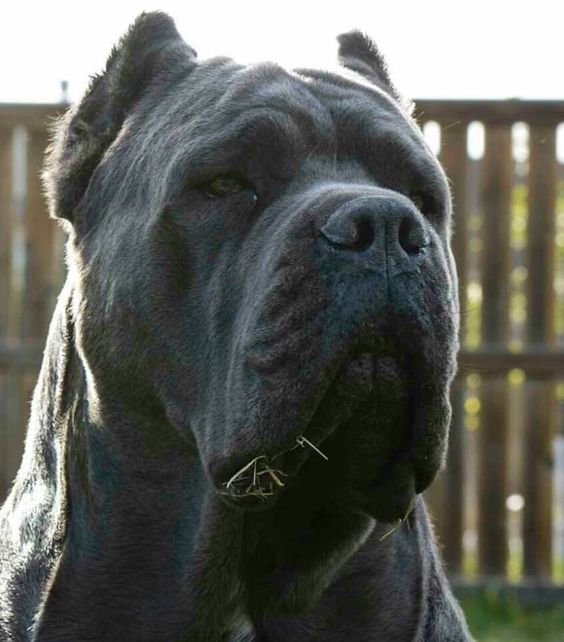
Transitioning your Cane Corso to potty in the yard is a significant step in their potty training journey. Outdoor training offers benefits such as natural relief and a more convenient cleanup process. However, it requires careful guidance and preparations to ensure a smooth transition.
Transitioning to Outdoor Training
Transitioning from indoor to outdoor potty training involves several important steps. Begin by gradually introducing your Cane Corso to the outdoor environment. Start with short trips to the yard, allowing your dog to explore and become familiar with the new surroundings. Use verbal cues like “Go potty” or “Do your business” to help them associate these commands with the act of eliminating.
During the transition, closely monitor your dog’s behavior. When you notice signs that they need to go, guide them to the designated outdoor potty area. Be patient and consistent with your commands and praise. Reward your Cane Corso with treats and affection immediately after they’ve successfully pottied outside. This reinforcement helps reinforce the desired behavior and encourages them to use the yard for their potty needs.
Safety and Yard Preparations
Safety is paramount when training your Cane Corso to potty in the yard. Ensure the yard is secure and free from hazards. This includes checking for gaps in fences or gates that your dog might slip through. Be aware of any poisonous plants in your yard and remove them to prevent accidental ingestion.
Consider the weather when training your Cane Corso to potty outdoors. Extreme temperatures can be uncomfortable for your dog, so plan potty breaks during milder times of the day. In hot weather, provide access to shade and fresh water.
Yard preparations are also crucial. Designate a specific area in your yard for your Cane Corso to eliminate. Keep this area clean and free of debris, as a cluttered space might deter your dog from using it consistently.
FAQs
1. When should I start potty training my Cane Corso puppy?
Ideally, you should begin potty training your Cane Corso as early as 8 weeks old, but the process can vary based on your puppy’s development.
2. Can I potty train my adult Cane Corso?
Yes, you can potty train an adult Cane Corso, but it may require more patience and consistency compared to training a puppy.
3. How do I choose the right location for potty training?
Select a quiet, easily accessible area with good drainage, both indoors and outdoors, for convenience and cleanliness.
4. What should I do if my Cane Corso has accidents indoors?
Clean up accidents immediately with an enzymatic cleaner to remove odors and prevent re-marking.
5. How can I encourage my Cane Corso to signal when they need to go outside?
Watch for subtle signs like sniffing, circling, or whining, and then take your dog outside immediately.
6. Is crate training necessary for potty training?
Crate training can be a valuable tool for potty training, as it helps establish a controlled environment and prevents accidents.
7. What rewards work best for potty training?
Use treats, praise, and positive reinforcement to reward your Cane Corso for successful potty breaks.
8. How long should I keep my Cane Corso in the crate during potty training?
Gradually increase crate time, but avoid leaving your dog in the crate for extended periods; use it as a training aid, not confinement.
9. Should I train my Cane Corso to potty indoors or outdoors?
It’s best to train your Cane Corso for both indoor and outdoor potty breaks to accommodate different situations.
10. What if my Cane Corso resists outdoor potty training?
Be patient, use positive reinforcement, and consider seeking guidance from a professional dog trainer if resistance persists.
Conclusion
In the journey of potty training your Cane Corso, you’ve explored various methods and strategies, all with the goal of fostering good habits and creating a harmonious living environment. From indoor training techniques to transitioning to the great outdoors, you’ve learned the importance of consistency, patience, and positive reinforcement.
With over 4 years of devoted companionship with my beloved Labrador Retriever, Robin, I have cultivated a deep understanding and expertise in all things canine. From training and behavior to health and well-being.

